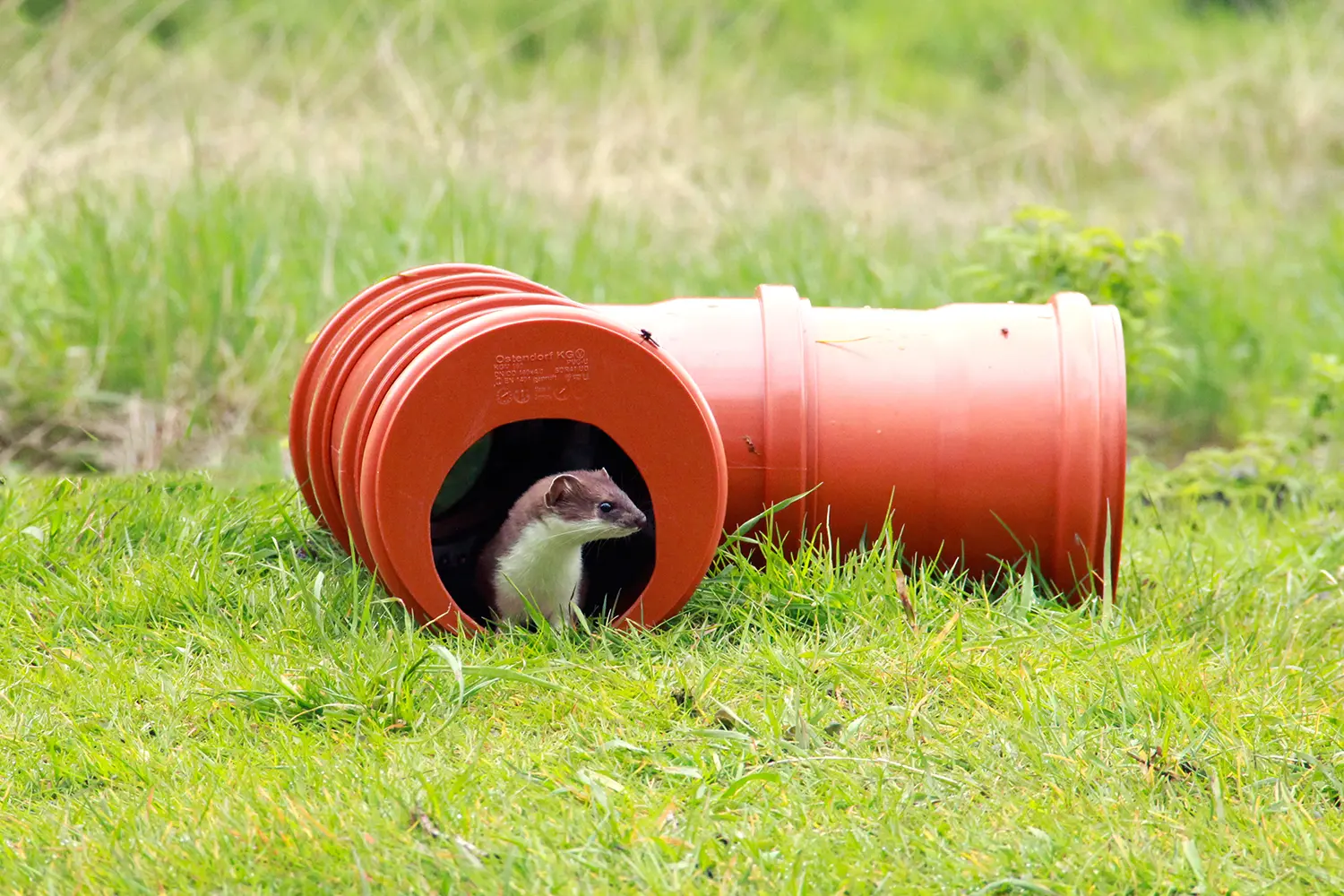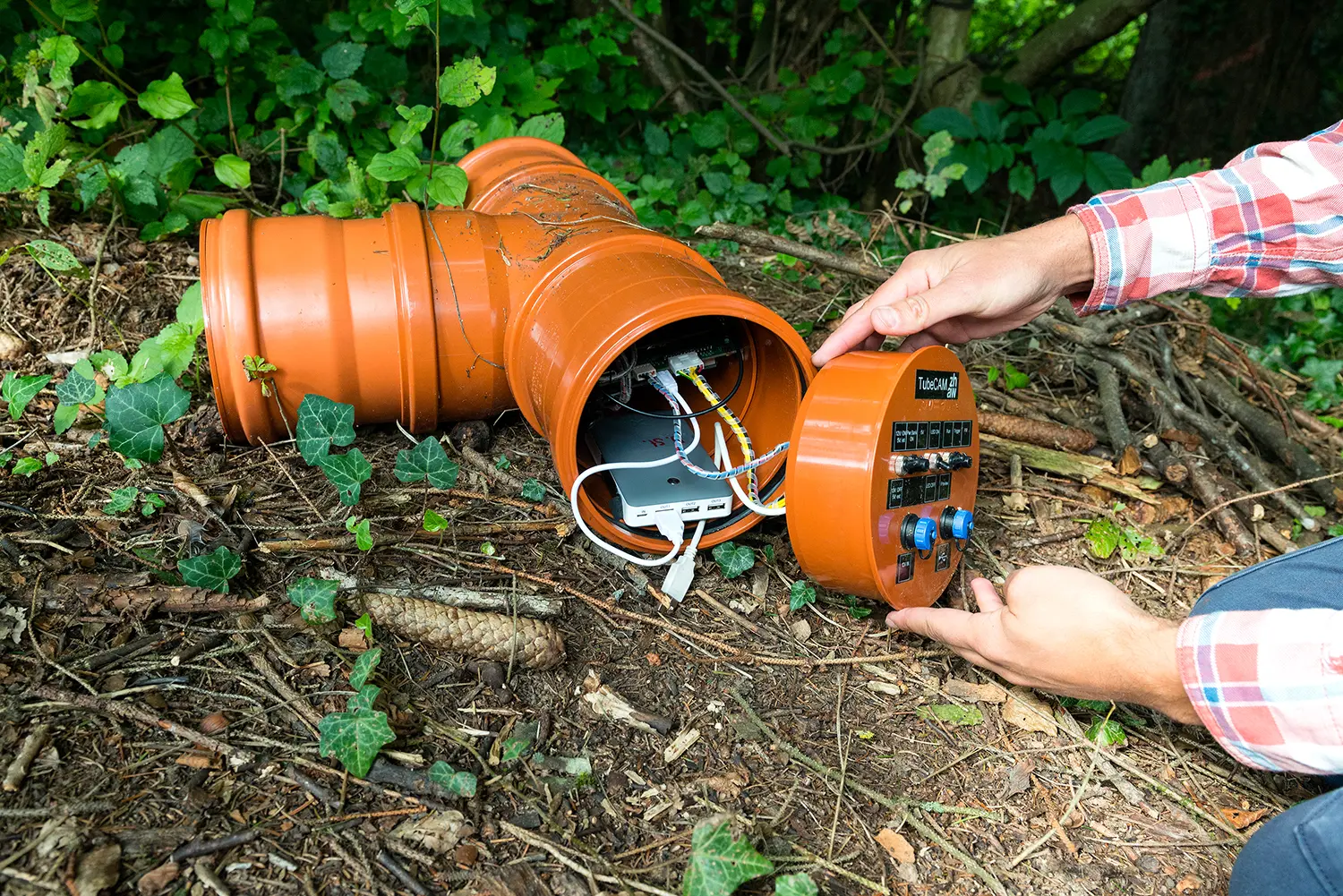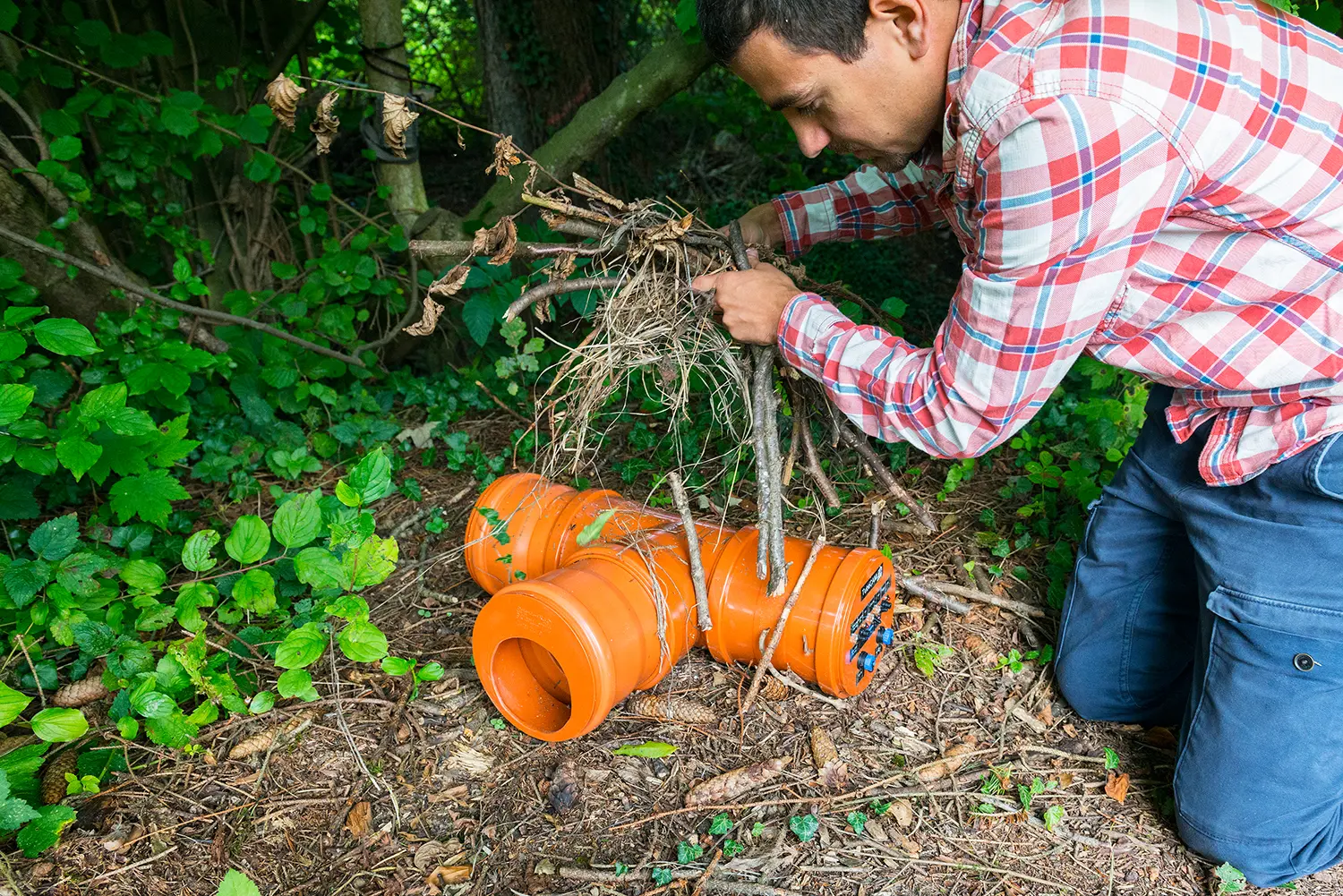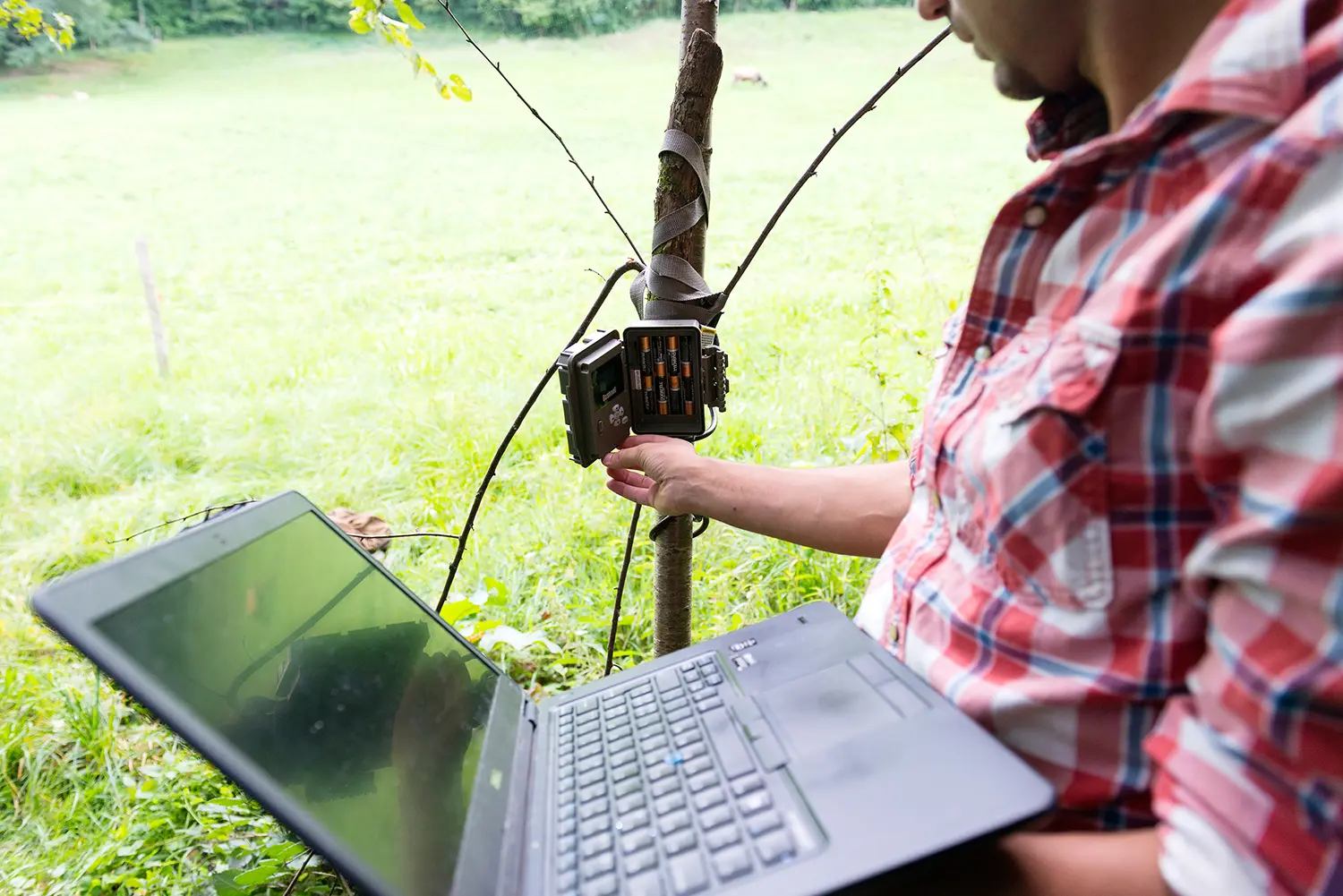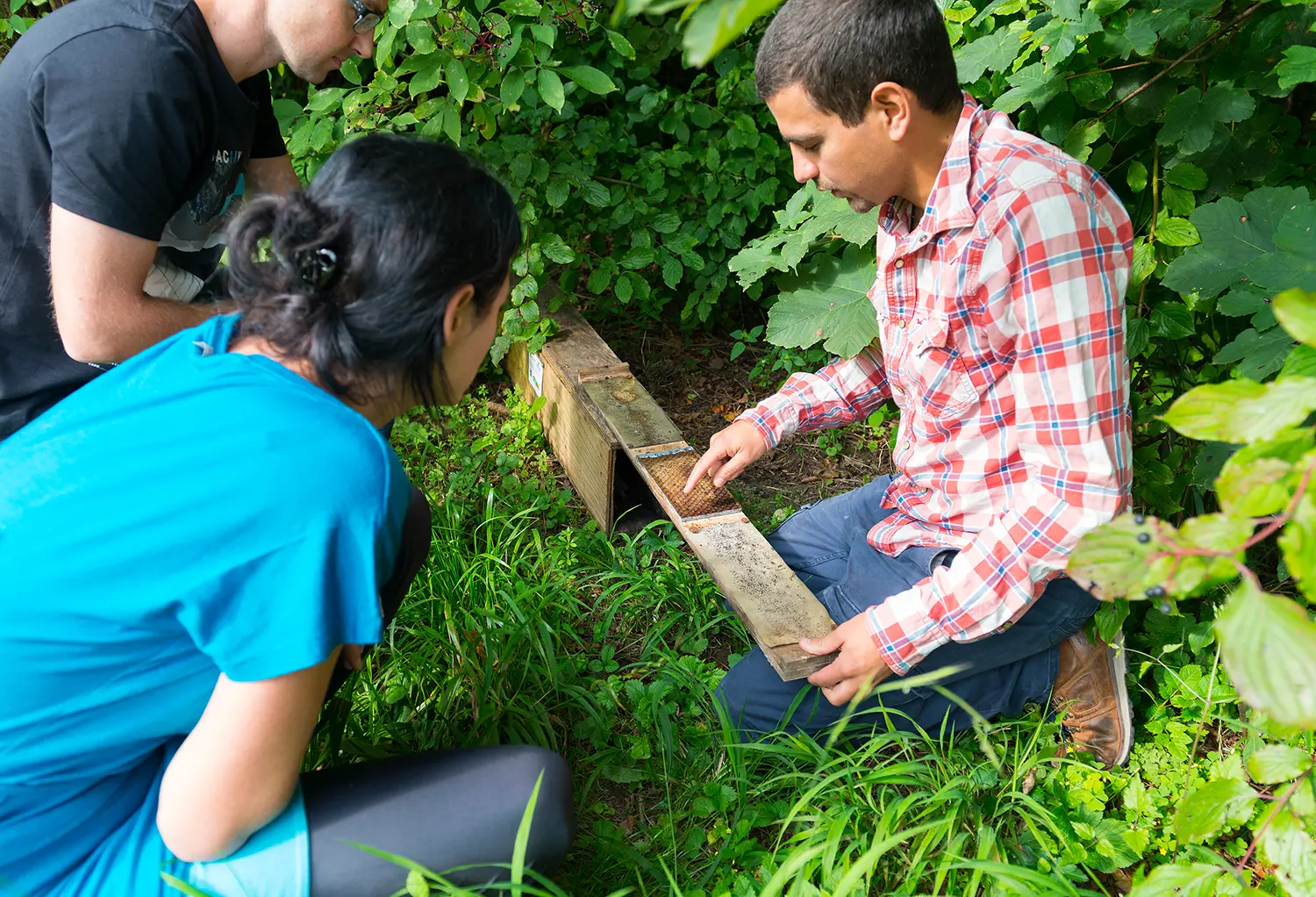A high-tech camera trap to detect weasels
ZHAW engineers have developed a novel camera trap tube for small mammals. With this method, endangered species, such as least weasels, can be documented more easily and with the help of non-specialists. Previous methods have been very complicated and only partly feasible.
The habitats of Swiss weasel species such as the least weasel or the stoat are becoming smaller and smaller. It is therefore urgently necessary to document the existing populations in addition to taking protective and supportive measures. Only in this way can negative trends be spotted early and conservation measures be evaluated. Until now, however, documenting small mammals has been very difficult and methods have been only partly feasible. For this reason, a team of ZHAW researchers led by Nils Ratnaweera have developed a novel type of camera trap which is intended to simplify the detection of endangered animals. An advantage over other detection methods is that the new TubeCam requires very little maintenance and the images are uploaded automatically to the internet. There, very much in the spirit of “citizen science”, private individuals can help with the time-consuming sorting of the pictures.
A self-contained system
The camera trap consists of a T-shaped plastic tube or ‘tunnel’. In one arm of the tunnel there is a heat sensor, a camera and a small computer, all packaged in waterproof material. When an animal passes through the tunnel, the sensor registers the rise in temperature, whereupon the camera takes a series of photos and the processor uploads them automatically to the internet via the mobile network. The new trap is designed to be low-maintenance and easy to use and the gathered data is meant to be evaluable without much specialist knowledge. “You just have to position the TubeCam and switch it on, and the rest is automatic”, Ratnaweera explains.
Using conventional camera traps, it is almost impossible to catch the small and nimble creatures. Another advantage of the new method is that weasels, who are naturally curious, want to explore the tunnel, so they are easier to capture on camera here than with a conventional camera trap. Classic tracking tunnels, which capture animal tracks with ink, have their drawbacks as well. For instance, the special ink used in this method is relatively difficult to produce, and the paper needs to be changed every seven days. Most significantly, however, it takes specialists to evaluate the tracks.
Citizen Science
A TubeCam typically takes thousands of pictures in just a few days, and only very few of these actually contain weasels. This is why the project depends upon the help of private individuals who volunteer to evaluate the images. “From the outset, we wanted to develop a method in which we could involve non-specialists as well”, explains Nils Ratnaweera. Whoever wants to help with the classification of the pictures can simply sign up on www.tubecam.ch. Currently, the project is still in its test phase; next year the website will go into full operation. The team at the ZHAW are also doing research on fully automatic image evaluation.
The idea for the TubeCam was conceived by Nils Ratnaweera, while the funding comes from the Institute of Natural Resource Sciences at the ZHAW School of Life Sciences and Facility Management. Engineers from the ZHAW School of Engineering are involved as well. At the moment, there are only a few existing prototypes of the TubeCam. Before a small series can be produced as planned in 2018, the hardware will be optimised by a Master student in electrical engineering starting in autumn. Moreover, the team is still searching for an investor.
Conservation measures just as important
What the ZHAW researchers want, however, is not just to document weasel populations, but also to protect them. For this purpose, the “Wiesel & Co am Zimmerberg” project promotes the building of numerous rock and brush piles and the conversion of barns into suitable winter quarters. Farmers are remunerated for providing these services. Weasels are friendly animals, and farmers appreciate them because they eat mice. Moreover, when weasels are present, many other creatures can benefit: “Ermines have high demands regarding the size of brush piles, so we always build them at least three by three metres wide and a metre and a half tall”, says Nils Ratnaweera. “We have observed that there are lots of other animals living in these piles too, such as hedgehogs, insects and amphibians.”
Downloads and further information
- Website for Vounteers
- Project page
- "Wiesel & Co am Zimmerberg" website
- Video "TubeCam: Eine neue Nachweismethode für Kleinsäuger"
- Download media release: TubeCam(PDF 259,7 KB)
- Download image: weasel in TubeCam
- Download image: weasel in TubeCam from the side
- Download image: electronics in TubeCam
- Download image: positioning TubeCam
- Download image: TubeCam team
- Download image: evaluation notebook
- Download image: tracking tunnel, predecessor of TubeCam
Contacts
Nils Ratnaweera, Institute of Natural Resource Sciences, ZHAW School of Life Sciences and Facility Management, phone: 058 934 55 63, e-mail: nils.ratnaweera@zhaw.ch
Manuel Martin, ZHAW Corporate Communications, phone: 058 934 75 75, e-mail: medien@zhaw.ch
